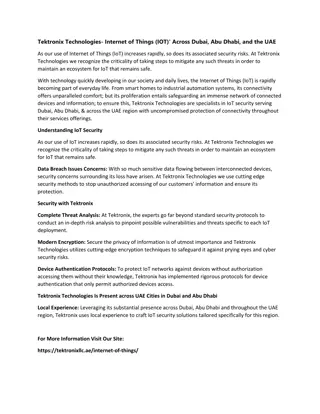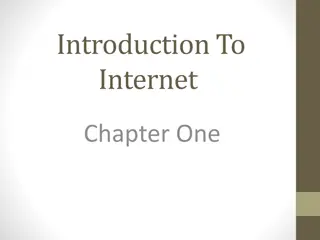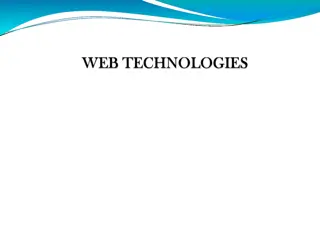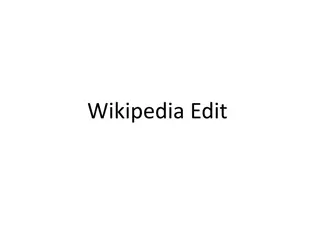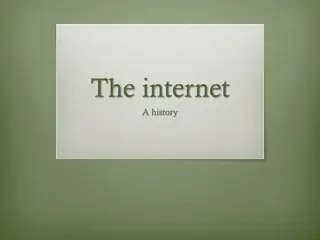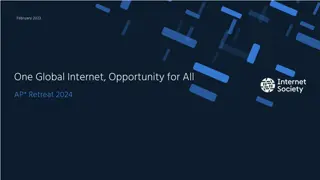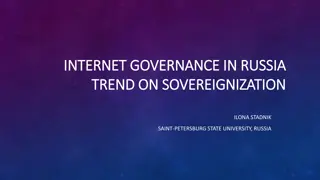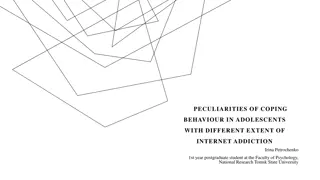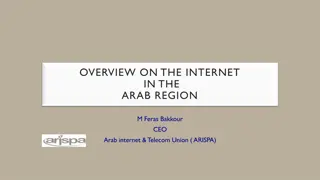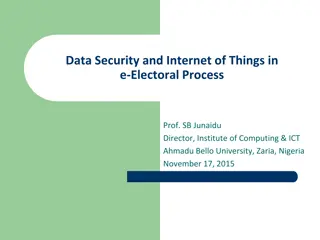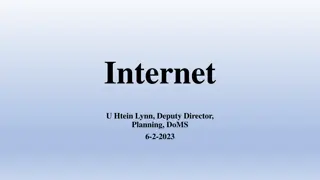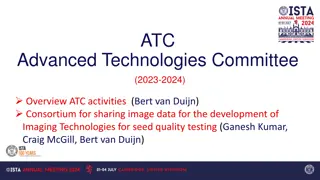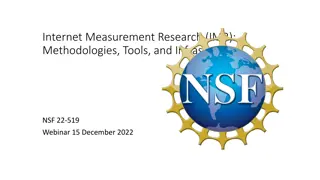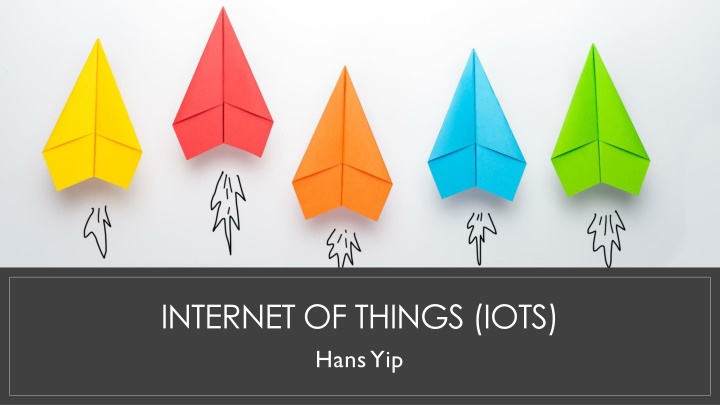
Exploring Internet of Things (IoTs) Technologies
The Internet of Things (IoTs) is a concept where everyday objects are connected to the Internet, enabling them to communicate with each other and to users. Through sensors and wireless technologies, IoT devices collect and share data, providing benefits in various sectors such as healthcare, transportation, and retail. Examples include smart thermostats, wearable devices, and smart trash cans. Discover more about IoT and its applications in this informative content.
Download Presentation

Please find below an Image/Link to download the presentation.
The content on the website is provided AS IS for your information and personal use only. It may not be sold, licensed, or shared on other websites without obtaining consent from the author. If you encounter any issues during the download, it is possible that the publisher has removed the file from their server.
You are allowed to download the files provided on this website for personal or commercial use, subject to the condition that they are used lawfully. All files are the property of their respective owners.
The content on the website is provided AS IS for your information and personal use only. It may not be sold, licensed, or shared on other websites without obtaining consent from the author.
E N D
Presentation Transcript
INTERNET OF THINGS (IOTS) Hans Yip
Learning Objectives What is Internet of Things (IoTs)? Examples of IoTs Technologies enable the IoTs
INTERNET OF THINGS (IOTS)
What is IoT? The internet of things (IoTs) is a computing concept that describes the idea of everyday physical objects being connected to the Internet and being able to identify themselves to other devices. The term is closely identified with RFID (Radio Frequency Identification) (short range and wirelessly) as the method of communication, although it also may include other sensor technologies, wireless technologies or QR codes.
What is IoT? the Internet of Things is about connecting Internet-enabled devices that relay information back to us, to cloud-based applications and to each other (device to device). These 'smart' devices can be anything from mobile phones, fridges, washing machines to wearables, medical equipment or jet engines. Basically, in the Internet of Things, objects use the web and unique identifiers such as RFID tags or processors in order to exist as part of the Internet.
What is IoT? The Internet of Things (IoTs) describes a computing environment where everyday objects, or things, are connected to the Internet. Sensors connected to these objects may gather, share, transmit, and receive data about the objects with other devices or servers online. Users can access the data or control individual objects using web or mobile apps.
Examples of IoTs A thermostat contains a temperature sensor that allow users to adjust your home temperature using an app on your smartphone. A wireless chip attached to a medicine bottle can send text messages to remind you to take your medicine, and can contact your pharmacy to refill the prescription when it is time. A smart trash cans in public places have sensors that monitor the amount of trash deposited and then send a message notifying workers to empty the can. A smartwatch or wristband can track your pulse and heart rate. Public transportation has GPS sensor that report their locations so that riders can be at the stop in time. Retailers can use beacons, devices that send low-energy Bluetooth signals, to notify customers about their promotion. Washers and dryers in many college dormitory laundry rooms are connected to sensors that report the availability of an individual machine. A car park can notify drivers which parking space is available and can also guide the drivers to the space.
Technologies Enable the IoT Communication technologies such as Bluetooth, RFID tags, near- field communication (NFC) tags. Sensors tracking heat (temperature), light, weight, or location. Technology for analyzing the data Big Data Technology for storage Cloud Speed of transmission mobile service providers offer connectivity to a variety of devices at broadband speeds.
IoTs in Action Refrigerator detects that milk is low. It sends text message to your smartphone notifying you to buy milk, and add this request to your schedule app. On the way home, your phone determines the closer grocery store that has the lowest price on the milk, and sends the address of that grocery store to your vehicle s navigator system, which in term gives you the direction to the store. In the store, your phone directs you to the dairy aisle, where it receives an electronic coupon for the milk. NOTE: this type of environment provides an efficient means to track or monitor status, inventory, behavior and more without human intervention. It sometimes is referred to as Machine-to-Machine (M2M) communications.
Other IoTs waiting for actions The following are the Things, can you think of any IoT in action? Alarm clocks Vehicles Phones Door bells Navigation systems Fitness tracks Clothing Coffee makers Refrigerators Washing machines Streetlights Watches Appliances
References Discovering Computers 2018 by Vermaat, Misty E, ISBN: 9789814792004

